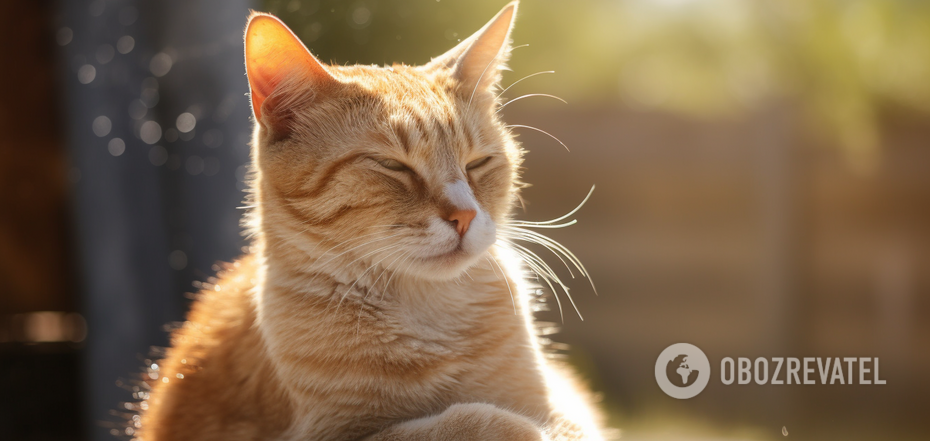Life
Cats get even hotter: what mistake pet owners often make in summer
Summer heat affects not only people but also animals. Especially pets that live indoors and don't have the skills to find the coolest place in a large area. In particular, this applies to cats.
Some owners start to think of different ways to help their furry friends and resort to a variety of tricks. From buying a cooling rug to cutting the cat's hair. OBOZREVATEL tells you what to do to help your pet survive the heat, as well as what can not only not help but also harm the animal.
Remember - cats love warmth
The habit of cats to lie on the radiator in winter is admired by all owners. But few people think that the radiator heats up about as much as the sun's rays. And the animal does not suffer from overheating, even if it spends the whole day on the heater. Therefore, do not rush to drag your pet into the shade if you see him warming up in the sun. His instinct for self-preservation will tell him when to move to a colder location.
But just in case, don't close the bathroom door. The temperature is usually the lowest there and the cat may want to rest after "sunbathing" there. However, make sure that he does not come into contact with household chemicals and cosmetics.
Don't forget about water
Even though cats don't sweat like humans do, they need plenty of fresh water in the heat just like we do. Make sure that your feline's drinker is always full. And wash it more often than usual, because in warm conditions, bacteria multiply rapidly in stagnant water.
If you're really worried about your cat, put a few ice cubes in the water bowl. And more often, offer wet food instead of dry food so that your cat gets more fluids. But make sure that the wet food does not stay in the bowl. In the heat, it spoils quickly and becomes unusable within a few hours, and such leftovers should be thrown away.
Take care of your cat when you leave the house
Water is not the only thing a cat needs to stay comfortable in the heat. When you leave your cat alone at home, make sure the room is well ventilated. But it's better to close the windows and even curtain them, so the house will heat up less. And never leave your pet in an outdoor enclosure or on a balcony on hot days!
You can also install special cooling mats at home. Or simply lay a damp towel on the floor in case the animal wants to freshen up.
Travelling with your cat in the right way
If you want to take your cat with you on a trip in the summer, remember the first rule - never leave your cat alone in a closed car for even a minute. In the heat, the interior can turn into a hot trap in a matter of minutes, which can be fatal for the animal.
Instead, it's a good idea to take a blanket or towel chilled in the fridge with you on your trip. They can be placed in the cabin or put in a carrier. For long journeys, you can wrap cooling inserts from cooler bags or bottles of frozen water in the blanket.
The main question is whether to cut your cat's hair for the summer
Looking at a fluffy pet on a hot day, we transfer our experience to it, which suggests that too much clothing quickly causes overheating. Some owners cut their cats for the summer because of this. And this is a huge mistake.
Animal fur, among other things, performs a thermoregulatory function. Unless there are medical reasons, you should not deprive your cat of this protection. Doing so can put your cat at risk of sunburn. Brushing your cat more often to remove dead hair from his coat is a good idea in the heat of the day.
How to recognise overheating in a cat?
A responsible owner should know what symptoms indicate that the animal is suffering from overheating. In cats, these are the following signs:
- anxiety and disorientation;
- loud intense meowing;
- dog-like snorting;
- excessive licking of the animal - it may be trying to cool itself;
- moist paw pads.
In this case, you should move the cat to a cool room, offer it water and a chilled bed. This should usually be enough.
If your pet develops heat stroke, however, it can be fatal and requires immediate veterinary intervention. Here are its symptoms:
- apathy of the animal;
- rapid breathing;
- vomiting;
- diarrhoea;
- weakness;
- problems with movement and even standing on paws;
- fever;
- loss of consciousness.
Earlier, OBOZREVATEL told how to determine how much a cat should drink per day and how to prevent dehydration in an animal.
Subscribe to OBOZREVATEL's Telegram and Viber channels to keep up with the latest news.



























